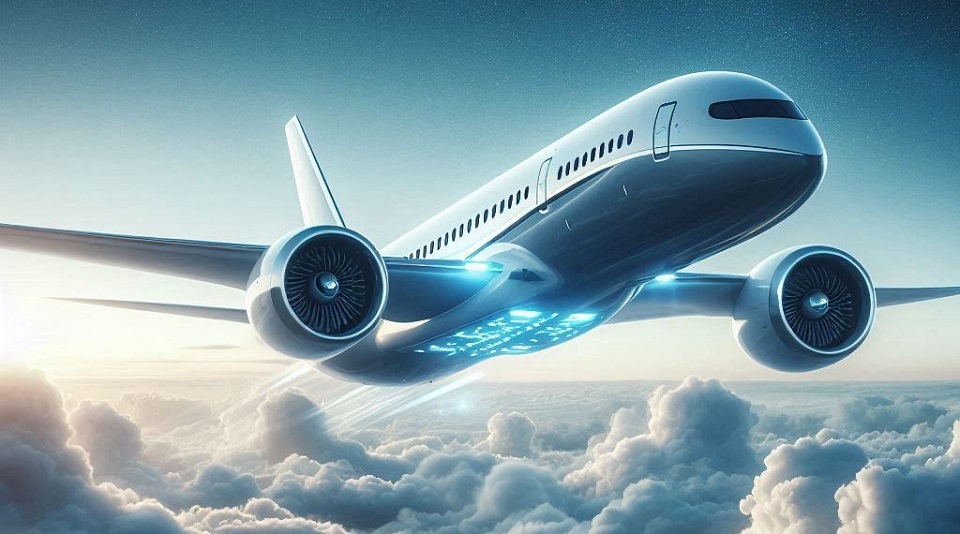Aviation
Boeing confirms 797: A New Era for Mid-Size Aircraft

Boeing is rumored to be developing the Boeing 797, as speculated among employees and airlines. The company’s announcements suggest that the new aircraft will be constructed in Washington. It is widely anticipated that this aircraft will be named the Boeing 797.
The Boeing 797 is expected to replace the 757, which was in production until 2004. The 757 was a highly regarded aircraft, though it was smaller than the Boeing 737 Max.
The new 797 will fill the gap in the mid-size aircraft market, catering to segments with capacities of fewer than 250 passengers.
Mega Comparison of Boeing 777x vs A350-1000 Aircraft
Boeing 797: The Next Generation Aircraft Set to Replace the 757
The project was initiated by Boeing in 2015 after determining that the market was ripe for a new design. By 2017, several airlines had shown interest in a composite, seven-abreast twin-aisle aircraft with an elliptical cross-section.
The Boeing 797 is anticipated to come in two variants: a 225-seat version with a range of 5,000 nautical miles (9,300 km) and a 275-seat version with a range of 4,500 nautical miles (8,300 km).
Experience the Boeing 737 MAX Interior.
Market forecasts for this aircraft type range from 2,000 to 4,000 units, with Boeing anticipating demand at the higher end of this spectrum. The projected price is between $65 million and $75 million.
On the other hand, Airbus is capitalizing on the market gap in this segment with its extended-range version, the Airbus A321 XLR, which is scheduled for release by the end of the year.
Exploring the Boeing 797: A Replacement for the 757 with Advanced Features
The A321 XLR not only features advanced composite materials but also incorporates the latest technologies found in newer airliners. These innovations are expected to reduce operating costs and enhance efficiency for airline operators.
Meanwhile, Boeing is focusing on increasing orders for the Boeing 737 Max and Boeing 777X as it navigates current challenges. The company plans to advance the development of the new Boeing 797, with the project expected to be underway by 2030 and potentially costing around $25 billion.

Aviation
Airbus Enhances A350 Cabin with 10-Abreast Seating

Airbus has announced a new partnership with Jiatai Aircraft Equipment, a Chinese aircraft seating manufacturer, to supply upgraded economy-class seats for the A350 widebody series.
This collaboration, unveiled at the 2024 Airshow China, focuses on developing a newly designed economy seat tailored for the A350‘s New Production Standard (NPS) cabin.
One of the key features of the NPS cabin is the ability to accommodate 17-inch wide economy seats, compared to the previous 16.5-inch wide seats that airlines were limited to in the A350’s earlier configurations.
British Airways Unveils Its Brand-New First Class Cabin for the Airbus A380
This change is made possible by the expanded space in the NPS cabin, which is 35 inches longer and 4 inches wider than the previous version. This extra space is achieved by slightly moving the cockpit wall forward and shifting the rear pressure bulkhead back by one frame.
The wider cabin allows airlines to add up to 30 extra economy seats without compromising comfort. For airlines opting for a 3-4-3 seating layout, the 17-inch wide seats are an excellent choice for a more comfortable passenger experience. However, some airlines, such as Iberia, may choose to retain a 9-abreast layout with wider seats for added comfort.
The NPS cabin also offers enhanced flexibility for airline operators. One major advantage is the ability to easily switch between a 9-abreast and 10-abreast seating configuration without requiring significant downtime for aircraft reconfiguration. Airlines can use the same seat rails, tracks, and IFE interfaces, making the transition smoother and quicker.
Etihad Airways Unveils 10 Exciting New Routes for 2025
In addition, the design of the floor attachments and air-conditioning systems has been optimized for 10-abreast seating, meaning airlines can upgrade their cabins without needing to make substantial modifications to the aircraft’s structure.
Though it’s still unclear when Jiatai’s economy-class seats will be officially added to the A350’s Buyer Furnished Equipment (BFE) catalogue, the collaboration marks a significant step toward enhancing the A350’s cabin offerings.
With this partnership, Airbus is providing more seating options for airlines, ensuring that they can meet diverse customer needs while improving overall operational efficiency.
-

 Aviation2 months ago
Aviation2 months agoMicrosoft Flight Simulator Raises $3 Million to Bring Back the An-225 Mriya
-

 Airlines2 months ago
Airlines2 months agoQatar Citizens Can Travel to the United States Without a Visa
-

 Aviation2 months ago
Aviation2 months agoQatar Airways bans these new Electronic Devices on plane
-

 Airlines2 months ago
Airlines2 months agoJapan Airlines Rolls Out Free Domestic Flights to International Passengers
-

 Defence2 months ago
Defence2 months agoWhich Country Has the Largest Fleet of Fighter Aircraft?
-

 Airport2 months ago
Airport2 months agoWestern Sydney Airport Welcomes Its First Plane After 6 Years of construction
-

 Airlines4 days ago
Airlines4 days agoDAMAC Air: Dubai’s New Luxury Airline Offers Free Flights for Registration
-

 Aviation2 months ago
Aviation2 months agoDid you know ? Once Boeing 747 carried 1088 passenger in 1991








